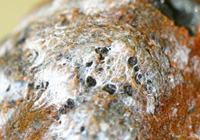



Home | Links | Curriculum Vitae | Contact
Current Work
Role of Outer Surface Proteins in Reduction of Humic Substances in Geobacter
Little is known about the mechanism of humic substance reduction used by microorganisms. These substances can act as electron shuttles promoting the reduction of metal oxides and the remediation of organic contaminants in the subsurface. The effect of deletion of single or multiple outer-surface redox active proteins in strains of Geobacter sulfurreducens is being used to study this important process.
Genome curation
Manual curation of genomes belonging to iron reducing microorganisms, both bacterial and archaeal.
Ph.D. Thesis
Isolation and Ecological Significance of Nitrate-Reducing Organisms at Deep-Sea Hydrothermal Vents
Hypothesis : Nitrate ammonifying microorganisms play an important role in both primary production and the cycling of nitrogen at deep-sea hydrothermal vents.
Objective : To gain a better understanding of how microorganisms are involved in the cycling of nitrogen at deep sea hydrothermal vents through culture dependent and independent methods, isolation of novel nitrate reducing microorganisms, and phylogenetic surveys (16S rRNA gene, citrate lyase (aclA and aclB), and periplasmic nitrate reductase (napA)) of isolates and environmental samples.
Samples from vent sites located on the Mid Atlantic Ridge (MAR), (Rainbow, Logatchev, and Broken Spur), and the East Pacific Rise (EPR), 9ºN, were utilized. Enrichments resulted in the isolation of several novel autotrophic nitrate ammonifying Epsilonproteobacteria bacterial strains, one of which has been described as a new species, Caminibacter mediatlanticus from the Rainbow hydrothermal vent site. Phylogenetic surveys of the 16S rRNA gene, aclB, and napA from Rainbow confirmed the environmental relevance of C. mediatlanticus.